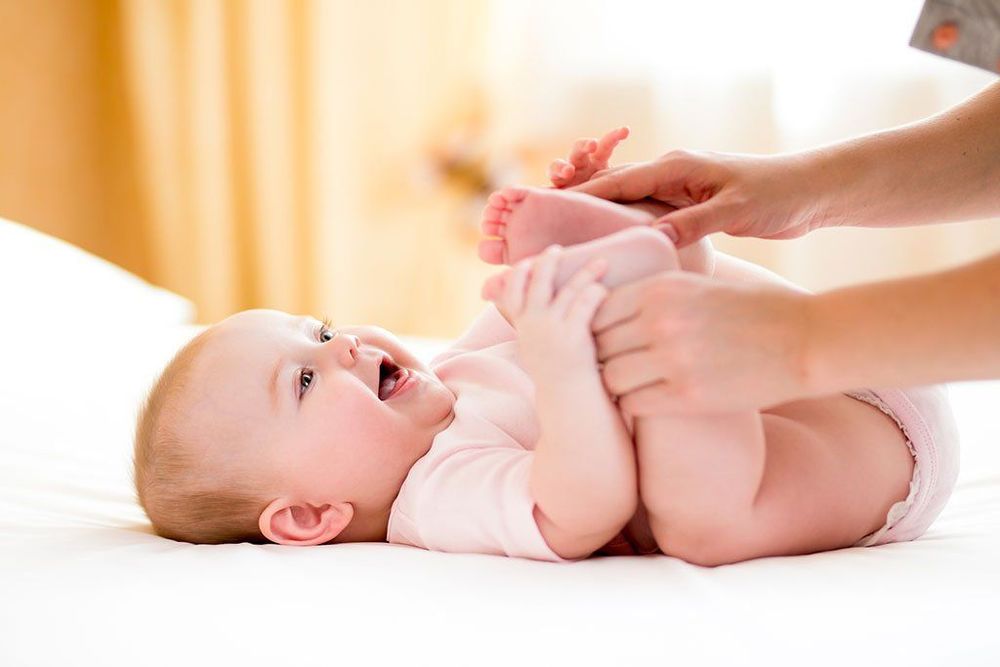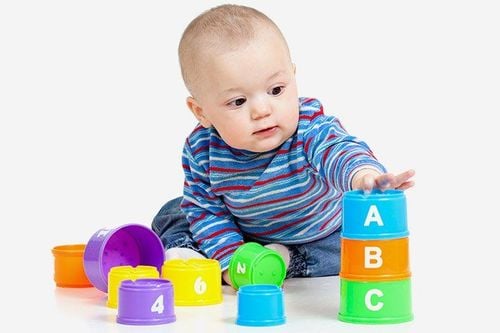This is an automatically translated article.
The article was consulted professionally by Assoc. Dr. Dr. Huynh Thoai Loan - Head of Pediatrics - Neonatology Department, Vinmec Central Park International General Hospital. Uncle is one of the leading experts in Pediatrics - Neonatology in Ho Chi Minh City with nearly 30 years of experience in examining and treating diseases of pediatric endocrinology, pediatric nephrology and other pediatric - neonatal issues.Entering the 6th month is an important milestone marking the development of the baby in all aspects, the child's daily development is always changing through skills, movement, communication... Therefore, parents need prepare a lot of things for your child to get ready for his growing up journey.
1. What can a 6-month-old child do?
Since being born, mom has prepared a lot of luggage to welcome your baby's birth, he will develop through each stage and now is 6 months old - an important milestone for your baby to grasp and learn everything begins get used to his world.
1.1 Gross motor When lying down, the baby can perform the flipping movement masterfully. When lying on the stomach, the baby's legs are raised straight up, and can be turned in all directions, can use hands and knees to support the body, extensor limbs to push the body forward or backward, can You can press your belly to the ground to support you to crawl forward or backward. When turned over in the prone position, the baby can fold one side of the body back to a semi-sitting position. When pulling the baby's hand to sit up, the baby can maintain balance, keep his back and hips straight, can raise his head and move freely. When sitting in a chair, your baby can hold and shake objects. If she falls down, she can sit up on her own, she can sit on her own in about half an hour, but her body needs to be bent forward and using her hands to support. When supporting your baby's back to get up, he can jump up and down. 1.2 Fine motor The baby's fingers can all make grasping movements. When a small toy is next to your baby, your baby can reach for the toy with one hand and hold the toy in the palm of his hand. When feeding, the baby's hands can already hold the bottle. When holding the toy in hand, the baby can wiggle his wrist to make the object move. When the baby's face is covered by clothes, the baby will use his hands to remove the clothes. 1.3 Adaptability

Let the baby lie down, when he sees his bed with a rattle, he will reach out to try to catch it, when he pulls him up and puts the toy in front of him, he will hold the toy. When an adult takes the object in the baby's hand and places it on the bed (where the baby can see it), the baby can crawl out to chase and hold the toy in his hand. If the toy falls to the ground, the baby will look down to find it. If three blocks are placed in front of the child, after the child holds the first block, the child begins to reach out to take the second block, and pays attention to the third block. The child can reach out and grab it. objects very quickly and resolutely when seeing objects. Normally, your baby's eyes will focus on the object he wants to grab, but may also close his eyes until he has a firm grip on the object. 1.4. Language Start to play single sounds: a, i, ba... the loudness and low, the high and low, the speed and slowness of the sound also change. When learning to speak, the baby's excitement, movements are also more, and often there is a response to the female voice. Babies can express their happiness and sadness through sounds, have different reactions to different intonations. When she hears someone calling her name, she turns her head. 1.5. Communication behavior When looking in the mirror, the baby still smiles at the shadow in the mirror but can distinguish the shadow in the mirror and himself as different. When two hands take turns holding objects, babies can detect different parts of their body, and know the difference between themselves and the outside world. Babies don't like strangers. Babies can distinguish between adults and children, know how to reach out and pronounce... to actively interact with others, smile with other children and reach out their hands to touch them. When adults wash the baby's face, if the baby doesn't like it, the baby will push his hand away.
Trắc nghiệm: Sự phát triển tinh thần, vận động của bé thế nào là đúng chuẩn?
Khi nào bé biết nói, biết hóng chuyện hay biết cầm cốc là "đúng chuẩn"? Điểm xem bạn biết được bao nhiêu mốc phát triển tinh thần, vận động "đúng chuẩn" của bé nhé!The following content is prepared under supervision of Thạc sĩ, Bác sĩ y khoa, Ma Văn Thấm , Nhi , Phòng khám Đa khoa Quốc tế Vinmec Dương Đông(Phú Quốc)
2. 6 months old is not stiff neck is abnormal?

Each child has a different body and the growth rate of each child is different. However, most babies follow common developmental milestones and stages (some premature babies may be a few weeks or months behind their peers). If the baby has the following signs, parents should seek advice from a doctor for timely treatment:
The child still has a tonic neck reflex (which is a reflex when placing the baby in a supine position, then turning the baby's head to turn around). to the side, the legs and arms on the same side of the neck to be turned will straighten and the other leg and arm will be bent as if the baby is holding a sword). The child cannot roll over from side to side. Still unable to sit with the help of others. Reach out with only one hand while the other hand is clenched. If your baby is not reaching certain developmental milestones by month or by week, consult your doctor. Growth retardation can be completely harmless, but there are cases when a baby has a new disease that leads to such a delay.
To help children achieve important developmental milestones, parents should supplement children with supportive products containing lysine, essential micro-minerals and vitamins such as zinc, chromium, selenium, and B vitamins to help meet the needs of children. meet the nutritional needs of children. At the same time, these essential vitamins also support digestion, enhance nutrient absorption, help improve anorexia, help children eat well, and develop comprehensively.
Please regularly visit Vinmec.com website and update useful information to take care of your baby and family.















